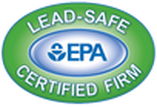 Gone are the days when you could reduce your electricity bill by the simple expedient of turning off the lights when you left a room. Vampire power, also known as standby power, is the electricity used by household appliances and electronic devices when they are not in use and even when they have been turned off! As long as a device is plugged in, it can continue to pull power. In some cases, this is vital to the proper functioning of the appliance such as a refrigerator, but many devices quietly drain energy when you think they are “off” and drain money from your wallet at the same time. Cell phone AC adapters continue to supply power even when the batteries are fully charged or when nothing is plugged into them. Some adapters waste as much as 50% of the power they use. Many televisions actually consume more electricity during the hours they're not in use than the times you're actually using them to watch your favorite show. Your TV may be turned off but it is still draining electricity, waiting in “stand-by” mode for you to click the remote control “ON” button. That big screen TV could be costing you close to $200 in wasted energy a year. Computer printers and monitors continue to pull power when the computer isn’t actively using them. 5% of all the electricity used in the US is vampire power and is equivalent to the amount of energy used by the entire country of Italy in one year! Here is what you can do to fight vampire power: 1) Identify which devices in your home are sucking energy needlessly. The Kill-A-Watt digital wattage reader from P3 International allows you to check how much power your electronic devices are consuming. 2) If possible, replace these devices with energy-saving Energy-Star devices. 3) Unplug it when it’s not in use! This is the one sure-fire way to end vampire power. Or put the devices on a power strip that has an ON/OFF button and turn it off when you no longer wish to use the appliance or device. 4) Get a Watt Stopper/Legrand's Isolé plug load controller which basically combines a typical surge protector with a motion detector. This gadget will cut off all energy flow to the devices plugged into it when it senses that there has been no motion in the room after a programmable amount of time. Don't let vampire power suck YOUR wallet dry!
0 Comments
 Before we can explain what “green construction” means, let’s define “green”. “Green” is short for “green living”. “Green living” is any action or activity that:
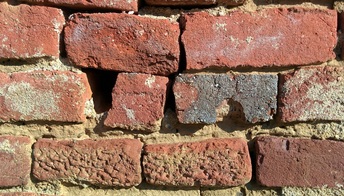 Recycling as much of the construction waste as possible instead of hauling it to a dump would be a good example of "green construction". Instead of tossing old bricks from a demolished building into the land fill, they can be salvaged and re-used. Many beautiful new structures have been created from building materials that have been recycled. 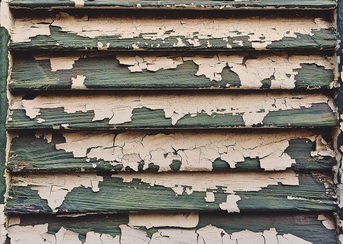 Remodeling an old home where there is lead paint present requires proper containment and disposal practices to prevent the release of lead-filled dust into the air which a good breeze would blow around for miles. It is now the law that any structure built before 1968 must be tested for lead paint. If lead paint is present, it must be removed according to very strict procedures. 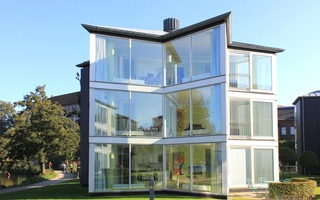 The installation of as many energy-efficient elements as possible in the building is a major action that is taken in “green construction”. This would include not only energy-saving appliances but things like double-paned windows, proper insulation, thermal paint, etc. that significantly reduce the energy used by air-conditioners or heating systems in cooling or heating the building. 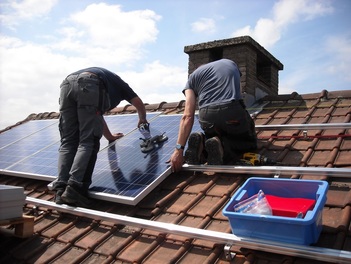 This helps to reduce the “carbon footprint” of the home. (This footprint is the amount of carbon dioxide produced by an individual or household, through vehicle emissions, electricity use, and fuel consumption.) Solar panels and tankless hot water heaters are building elements that also drastically reduce the carbon footprint of a home. They also reduce your electricity bill - something everyone can be happy about!  “Green construction” would include the use of only materials that would not harm the inhabitants of the building on either a short-term or long-term basis. Paint, carpeting, insulation, flooring and other materials can release toxic particles into the air for years after being brought into a home. In many cases, the air inside the home is more toxic than the air outside as a result of toxic fumes created by carpeting and paint. 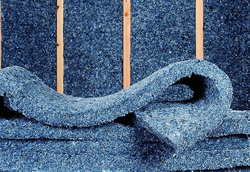 “Green” materials are available that do not produce harmful effects by the release of air-borne toxic particles. An example of this is insulation created from recycled denim as seen in the photo at the right. Other such materials are non-toxic paint and natural fiber carpeting which do not emit toxic fumes after they are have been used in a remodeling project.  Finally, “green construction” would mean using only building materials that were sustainable - materials that have been harvested in such a way so as not to deplete or permanently damage that resource. Using cork or bamboo hardwood flooring materials instead of oak is an example of this. Both these materials can be grown rapidly and in abundance to meet present needs without any fear of depriving future generations of these resources.  As you can see, “green construction” is the combined responsibility of the home owner, the interior designer and the building contractor. “Green construction” is truly a team effort. Working together, you can improve the quality of life for yourself, your family, Mankind and every living thing that calls this planet “home”. Rocha Construction can help you build a home addition, remodel your kitchen or bathrooms or work with you on any home improvement project. 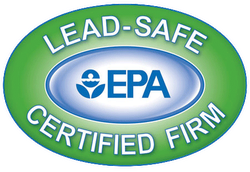 Rocha Construction is a Lead-Safe Certified Firm. Give Gilbert Rocha a call for a free in-home estimate at 310-484-4256.  We are all concerned about good air quality. We are very much aware of air pollution as a problem for many people whose health is easily affected by “bad air”. Most of us think air pollution only comes from cars, buses, factory chimneys, etc. We can SEE it in the form of smog. We can FEEL it when we try to breathe on a bad smog day. We assume that if we stay inside with the windows and doors shut tight and have some sort of air-filter system in place, we should be breathing fairly clean air - right? Wrong!  What most people don’t know is that the Indoor Air Quality (IAQ) in their home can have a pollutant level 3 to 5 times higher than outside the home according to the EPA. Thousands of products on the market today are made from what are known as VOCs volatile organic compounds). “Volatile” means “evaporating readily at normal temperatures and pressures.” Certain solid and liquid products that you bring into your home for a home improvement project release particles into the air in the form of gases and, depending on the product, they can continue to release harmful gases into the air for years.  Three major contributors to your Indoor Air Quality are your carpeting, flooring and the paint on your walls. That “new carpet", "new floor" or “fresh paint” smell could be coming from toxic fumes. Your newly remodeled kitchen, bathroom or family room could be more toxic and harmful to your family than your backyard. The next time you remodel your home, make sure that you use only products that do not contain VOCs or have a low VOC rating. If you need help, ask us. Rocha Construction is working toward becoming a 100% Green Remodeler. Call Gilbert Rocha at 310-464-4256.  1) Does he have a license? Make sure the contractor has a California state license. He must display his license number on his business card, in his ads, on any signs promoting his business, on his website and on his bids and contracts. 2) Is his license valid? Check the license number online at www.cslb.ca.gov or by calling (800) 321-2752. Sometimes a contractor may have a license number but has had his license suspended or revoked. You can find out the status of his license by checking with the CSLB (California State License Board). Ask to see the contractor’s pocket license and a picture ID to ensure that the person you are dealing with is indeed the contractor whose license number appears on the paperwork.  3) How does his bid compare? Get at least three written bids. Compare the bids. Do the bids include everything you are expecting to have done on the job? Do they include exact and detailed specifications for the materials and fixtures that you want? If something is not included in the written bid, then you could be charged extra for it later or you might get an inferior product substituted for the one you verbally specified.  4) Can he give you references? Don’t be afraid to ask each bidder for the names, addresses and phone numbers of at least three previous customers. If the contractor is reputable, he will give you this information. Call the references and ask them how they felt about their remodeling experience. Did the contractor answer their questions? How did he handle any problems that come up during the job? Was the job site kept clean? Was the job completed on time? Are they happy with the finished product? 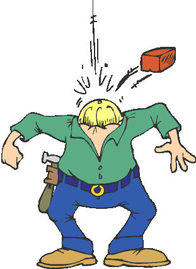 5) Is everything in writing? Once you accept a bid, make sure that everything is in writing and included in the contract. Read the contract and make sure that you understand all the terms. 6) Does he have workers’ compensations insurance? The contractor must have workers’ compensation insurance for his employees. If he doesn’t, this could put you at risk legally. Some general contractors don’t have employees. They hire sub-contractors (plumbers, drywall, insulation, masonry, etc.) to do the work. In this case, make sure that the sub-contractors are carrying workers’ comp for their people. 7) Is he asking for the legal deposit amount? The contractor will ask you for a deposit. By law, he is not permitted to receive more than 10% of the total cost of the job or $1,000, whichever is less. Never pay a contractor in cash. 8) Does he provide and stick to a payment schedule? Ask the contractor for a payment schedule. This will show the progressive phases of the work and how much you are being charged for each phase. Only pay what the contractor is owed based on what had been completed. 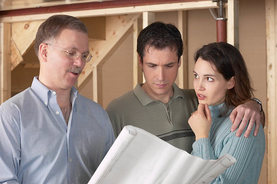 9) Are there unhandled problems during the progress of the job? Create a file for the job. Keep all paperwork in this file. During the job, it is a good idea to keep a record of all verbal agreements between you and the contractor and/or job supervisor. Check back to make sure these are met. If it is a big job, keep a daily log of everything that occurs that you might want to reference later. Note all problems and track when, how and if they were handled.  10) Is he interested in your complete satisfaction? Once the job is done, take the time to do a thorough walk-through, inspecting the job for anything that might not be to your COMPLETE satisfaction. Do not make the final payment to the contractor until he has handled any and all issues found during this inspection. If he is an ethical person, he will be more than happy to oblige. He should even offer to give you a one-year warranty on his work, meaning that if you find anything wrong within one year of completion, he will fix it at no cost to you. |
AuthorRocha Construction Archives
April 2021
Categories
All
|

 RSS Feed
RSS Feed


